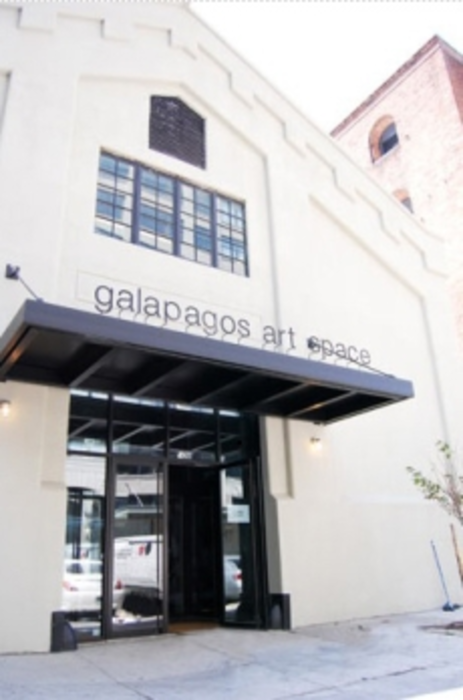The five high-level creatives on stage at the Galapagos Art Space located on the waterfront beneath the Brooklyn Bridge in Dumbo at Creative Week‘s “Brooklyn’s Finest Creative Roundtable” on Wednesday morning were cool. Not much else to say. These are some seriously cool people. HUGE partner and global creative director Joe Stewart has sleeve tattoos and Jonathan Hills of Domani was wearing colorful stripey socks. Laid back and smart.
But being “cool” is not the point, at least not exclusively.
For example, David Schwartz, creative partner at HUSH, was at a meeting with client Estée Lauder last week listening to a presentation on skin cells. “It’s not something I would go home and read about,” said Schwartz — but it’s a creative’s job to be inquisitive and interested and “get into” what he or she is doing, subject matter aside.
“Latch onto something that gives you pleasure and mine that,” Schwartz said.
Big Spaceship founder Mike Lebowitz riffed on the point. “We’re supposed to be able to see through the branding, but there was a point when for some reason I was still really attached to doing cool stuff and stuff I was interested in,” he said. “But then I woke up and realized that … what it’s really about is doing something that challenges you intellectually.”
Creatives “are makers and makers want to make things and tinker and that’s what’s really exciting,” Lebowitz said.
Basically, un-sexy is the new sexy and there’s no such thing as a “bad project.” So says Stewart of HUGE.
“Sometimes there are jerky clients, but that’s a different thing — no project is uncool and your job as a creative person is to make whatever you’re working on cool,” said Stewart, referencing a recent project his agency worked on for a client looking to talk to students about paying back debt. How uncool can you get, right? Wrong, said Stewart. “Your job is to turn anything into something interesting,” he said.
What is irrefutably cool, though, is Dumbo itself, which, like many other neighborhoods in New York over the years, experienced a revivification that’s transformed it into a creative hub. As moderator Paul Woolmington, founding partner of Naked Communications pointed out, Harlem had its Jazz Age; in the 1940s Orson Welles stalked the streets around Broadway; the Beat Generation did its thing in Greenwich Village — and now there’s Dumbo.
Throw a stone from the Galapagos Art Space and you’re probably going to break an agency’s window.
“But these creatives have been here for a decade or more,” Woolmington said, gesturing at the panelists on stage. “They didn’t just happen upon this space when it became trendy.” This is especially true for Hills, whose agency Domani now does work for The Westin Group, Inc., New Line Cinema, Victoria’s Secret, Gucci and others. But when Domani first opened its doors, Hills and his cohorts had to bring their own toilet paper to work in the morning.
It’s that kind of catch-as-catch-can laidback attitude that appeals.
For example, take the location-based Instaprint photo booths dreamed up by Breakfast, a self-described “tiny magical shop” that devises bespoke and real-world products and installations. After Instagram released its API in February 2011, Breakfast cofounder and creative director Andrew Zolty and his team had a collective brainwave. If Instagram was inspired by Polaroid, then why not take that full-circle? An Instaprint box, as its name denotes, will instantly print any Instagram photo tagged with a specific location or hashtag. The product debuted at SXSW two years ago and the response has been enormous.
“But the first Instaprints were made out of boxes we got from [furniture store] West Elm around the corner,” Zolty said.
Last week at Big Spaceship’s very first “hack day,” employees were broken down into groups and tasked with creating a working prototype within 24-hours. Of the eight solid ideas that came out of the day — “I had pretty high expectation and they far surpassed them,” Lebowitz said — three will actually be going into production.
One such product is called “Tracksy,” a tool that can produce instant cost benefit analyses using real-time subway and taxi data, including traffic patterns and train delays, to help harried New Yorkers on-the-go decide whether it’s more economical and/or beneficial time-wise to take a taxi or the MTA. Lebowitz asked the audience members what they thought about that idea and there was applause all around. I think I even heard a “whoop.”
Yes, we live in a work-a-day world, but that doesn’t mean creativity has to fall by the wayside.
“Even though we have to produce our livelihoods through graft, we can still be innovators.” Well said, Lebowitz.
Check out caples.org for some excellent examples of recent creative work and click here for more Creative Week coverage.
Allison Schiff is web editor at Direct Marketing News.








